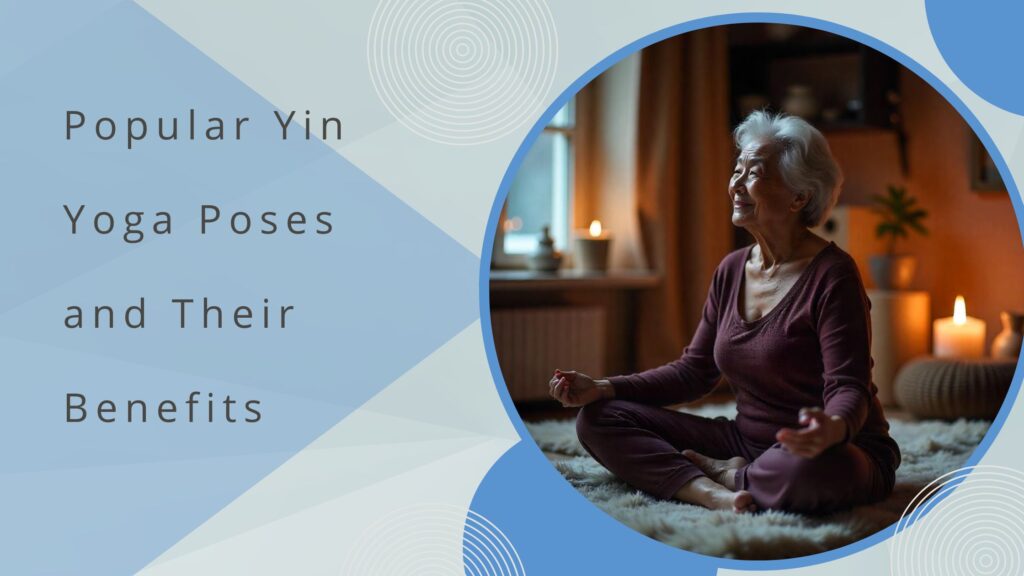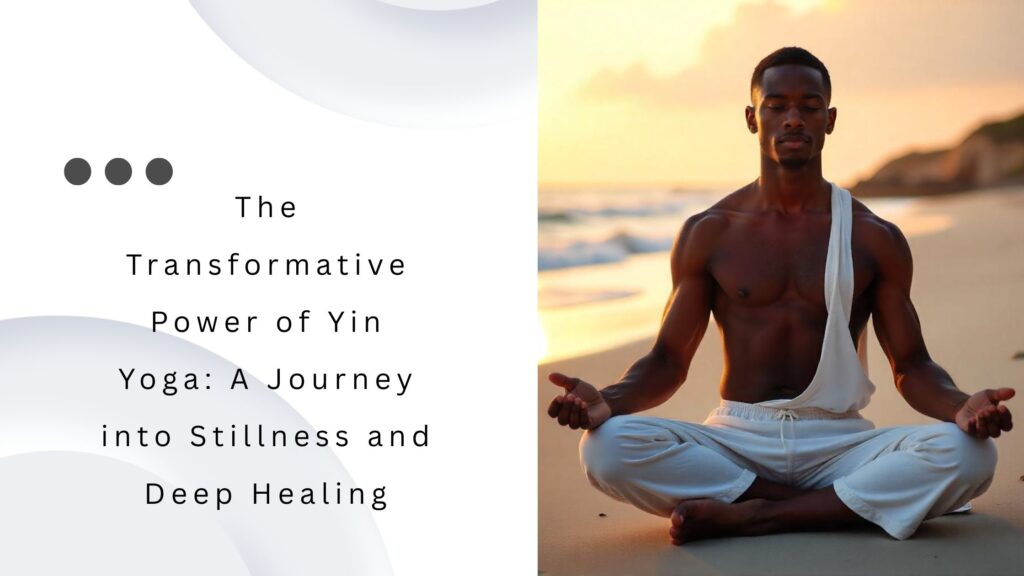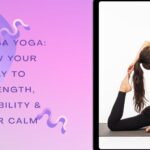In a world that constantly urges us to do more, move faster, and achieve higher, Yin Yoga offers a radically different path — one that invites us to slow down, let go, and connect deeply with our bodies and minds. If you’re seeking a gentle yet powerful practice that supports physical healing, emotional release, and inner peace, then Yin Yoga might just be the life-changing practice you didn’t know you needed.
Whether you’re a beginner yogi, a seasoned athlete, or someone simply looking for relief from chronic tension or anxiety, this ancient yet modern practice holds something unique for everyone. In this comprehensive guide, we’ll explore what Yin Yoga is, its benefits, who it’s for, and how to incorporate it into your daily routine.
Yin yoga is a gentle, slow-paced form of yoga where poses (asanas) are held for extended durations—usually between 3 to 10 minutes—to reach the deeper connective tissues such as fascia, ligaments, and joints. This practice centers on mindful awareness, deep breathing, and letting go of tension to enhance flexibility, encourage relaxation, and reduce stress.
Yin Yoga is a gentle, slow-paced form of yoga that integrates elements of traditional Chinese medicine, featuring poses (asanas) held for extended periods—often five minutes or longer for more experienced practitioners.
Table of Contents
What is Yin Yoga?
Yin Yoga is a slow, meditative style of yoga that targets the deep connective tissues, such as ligaments, fascia, and joints. Unlike more dynamic practices like Vinyasa or Power Yoga, Yin Yoga involves long-held passive poses — often held for three to five minutes or even longer. The focus isn’t on building heat or muscle strength but rather on cultivating stillness, surrender, and inner awareness.
This unique approach makes Yin Yoga ideal for increasing flexibility, releasing deep-seated tension, and activating the parasympathetic nervous system, which helps the body rest and repair.
The Origins and Philosophy Behind Yin Yoga
Rooted in the principles of Traditional Chinese Medicine (TCM) and Taoist philosophy, Yin Yoga views the body as an energetic system. It focuses on stimulating the body’s meridians — invisible energy channels that correspond to different organs and emotional states. According to this belief system, energy (or chi) must flow freely for optimal health and vitality.
The idea of yin and yang is central to understanding this practice. While Yang energy is active, dynamic, and outward-moving (think Vinyasa, HIIT, or daily hustle), Yin energy is slow, passive, and inward-turning. A balanced life needs both. Practicing Yin Yoga helps restore equilibrium by cultivating the calm, receptive side of your being.
Core Principles of Yin Yoga Practice
Understanding the principles behind Yin Yoga can help deepen your practice:
1. Passive Postures Held for Time
Unlike active yoga styles that use muscular engagement, Yin Yoga encourages total surrender into the pose. Poses are held for extended periods, often with the support of props like bolsters, blankets, or blocks.
2. Targeting Connective Tissues
Because poses are held without muscular effort, Yin Yoga targets fascia, ligaments, and joints, rather than muscles. This is especially beneficial for improving joint mobility and releasing deep-seated tension.
3. Stillness and Mindfulness
In Yin Yoga, stillness is the practice. Each pose becomes a meditation — an opportunity to observe sensations, emotions, and thoughts without judgment.
Top Physical and Mental Benefits of Yin Yoga
Let’s explore why Yin Yoga is gaining popularity not only in studios but also in homes around the world. Here are the key benefits:
✦ Improves Flexibility and Joint Health
Because Yin Yoga focuses on deep tissue release, it’s incredibly effective for increasing range of motion and maintaining healthy joints. It’s one of the best yoga styles for flexibility, especially for people who feel stiff from sedentary lifestyles or intense workouts.
✦ Reduces Stress and Anxiety
By holding poses in stillness, you activate the parasympathetic nervous system, helping the body shift into a relaxed, healing state.
✦ Enhances Circulation and Energy Flow
In Traditional Chinese Medicine, Yin Yoga stimulates meridians, enhancing the flow of chi (life force energy). This can support better organ function, reduce inflammation, and improve energy levels throughout the day.
✦ Boosts Emotional Resilience
Holding postures for several minutes allows buried emotions to surface. With mindful breathing and stillness, you create a space to process and release emotional blockages, leading to a greater sense of peace.
✦ Supports Better Sleep
Yin Yoga is a powerful natural remedy for insomnia. A slow evening practice can help you unwind, calm your nervous system, and prepare for a deeper, more restful sleep.

Popular Yin Yoga Poses and Their Benefits
Here are some common Yin Yoga poses for beginners and beyond, along with their unique benefits:
1. Butterfly Pose
- Stretches inner thighs, hips, and lower back
- Supports digestive organs and kidney meridian
2. Dragon Pose
- Opens hips, groin, and quads
- Stimulates liver and spleen meridians
3. Sphinx Pose
- Gently compresses the lower back and activates spinal curvature
- Enhances circulation to adrenal glands
4. Caterpillar Pose
- Deep stretch for hamstrings and spine
- Encourages introspection and emotional release
5. Child’s Pose (Balasana)
- Grounds the body and calms the mind
- Excellent for nervous system reset and relaxation
Each pose can be held between 3–7 minutes, depending on your comfort level. Use props for support, and always listen to your body.
Who Should Practice Yin Yoga?
One of the best things about Yin Yoga is its accessibility. It’s a perfect practice for:
- Beginners who want a gentle introduction to yoga
- Athletes needing deeper flexibility and recovery
- Busy professionals seeking stress relief and stillness
- People with chronic pain or mobility challenges
- Seniors who need low-impact movement
- Anyone recovering from emotional or physical burnout
However, if you have connective tissue injuries, joint replacements, or osteoporosis, it’s important to consult a healthcare professional before practicing.
Yin Yoga vs. Restorative Yoga: What’s the Difference?
These two styles are often confused, but they serve different purposes:
| Yin Yoga | Restorative Yoga |
| Targets deep connective tissue | Focuses on complete relaxation |
| Poses can be intense | Poses are ultra-gentle |
| Stimulates energy flow | Aims to calm and restore |
| No muscular engagement | Heavy use of props for full support |
If you’re looking to stretch and stimulate, choose Yin Yoga. If you want to rest and restore, go with Restorative Yoga — or better yet, blend both for a holistic self-care routine.
How to Incorporate Yin Yoga Into Your Life
Here’s how to make Yin Yoga part of your daily or weekly routine:
➤ At-Home Practice
Set up a quiet space with a mat, cushion, and a few blankets or bolsters. Dim the lights, play calming music, and commit to just 20–30 minutes a few times per week.
➤ Evening Wind-Down Routine
Yin Yoga before bed is one of the best ways to calm your nervous system. Try a few poses like Sphinx, Caterpillar, or Reclining Twist to promote deep sleep.
➤ As a Complement to Yang Practices
Balance your fast-paced workouts or Vinyasa flow with yin yoga sessions to avoid burnout and improve flexibility.
➤ Join a Class or Online Session
There are countless yin yoga classes for beginners and advanced yogis online. Find one that aligns with your energy and goals.
Read More: Aerial Yoga: Elevate Your Practice with Strength, Flexibility, and Grace
Read More: Somatic Yoga: The Gentle Practice That Reconnects Mind and Body
Final Thoughts: Why You Should Embrace Yin Yoga Today
In a high-speed world obsessed with productivity, Yin Yoga is a revolutionary act of self-care. It teaches you how to be — not just do. It invites you to sit with your sensations, to befriend your body, and to rediscover the healing power of stillness.
Whether you’re searching for yin yoga for anxiety, yin yoga for flexibility, or simply a way to slow down, this practice meets you exactly where you are.
So roll out your mat, take a deep breath, and let yourself melt into the moment. Your body, mind, and soul will thank you.
Ready to begin your journey with Yin Yoga
Start today with a short sequence, and let this gentle, powerful practice guide you back home — to yourself.
FAQ:
Q. What is Yin Yoga and how is it different from other yoga styles?
Ans: Yin Yoga is a slow-paced, meditative practice that targets deep connective tissues through long-held passive poses. Unlike active styles like Vinyasa, it focuses on stillness, flexibility, and inner awareness.
Q. What are the main benefits of practicing Yin Yoga?
Ans: Yin Yoga improves flexibility, enhances joint mobility, reduces stress and anxiety, boosts circulation, and supports emotional and mental well-being.
Q. Is Yin Yoga suitable for beginners?
Ans: Yes, Yin Yoga is ideal for beginners. Its gentle pace and emphasis on breath and mindfulness make it accessible to people of all ages and fitness levels.
Q. How often should I practice Yin Yoga to see results?
Ans: Practicing Yin Yoga 2–3 times a week can yield noticeable improvements in flexibility, stress levels, and overall well-being. Even 20-minute sessions can make a difference.
Q. Can Yin Yoga help with sleep and relaxation?
Ans: Absolutely. Yin Yoga activates the parasympathetic nervous system, helping calm the body and mind—making it an excellent practice for improving sleep and promoting deep relaxation.
Q. What is the main purpose of Yin Yoga?
Ans: Yin yoga offers you the opportunity to create space for emotions, thoughts, and feelings that have been tucked away to emerge. Typically, during a Yin yoga session, you will be encouraged to acknowledge these feelings without attaching yourself to them. It’s a practice of observation, allowing you to notice them without becoming immersed in them.
Q. What are the 5 elements of Yin Yoga?
Ans: The yin yoga sequence facilitates the flow of energy through various channels, with each pose targeting one of the five elements—water, wood, fire, metal, and earth.
Q. Is Yin Yoga okay for beginners?
Ans: Yin yoga has quickly become popular due to its benefits for both beginners and experienced practitioners. It’s a suitable form of exercise for individuals of all ages and fitness levels, though it’s still important to take precautions to prevent injury.
Q. Can I do yin yoga daily?
Ans: Practicing Yin yoga daily is generally considered safe.
Declaration Note:
We use third-party videos and images on https://yogavidhi.com/ for educational and illustrative purposes. All rights belong to their respective owners. No copyright infringement is intended.



